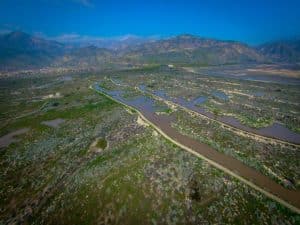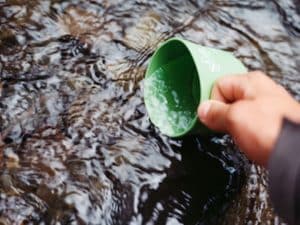Groundwater Council
California’s history of water is rich with tales of lawsuits and political clashes. But in the Inland Empire, a dozen local agencies are doing things differently to ensure the long-term viability and sustainability of the region’s underground water supplies. Led by the San Bernardino Valley Water Conservation District, these cities, water districts and other agencies have joined forces to form the San Bernardino Basin Groundwater Council — a collaborate and voluntary team that has taken a historic step toward water management.
Participating members contribute water and/or funding to purchase imported water that will be used to restore and maintain the groundwater basin at sustainable levels.
Participation is voluntary and allows a regional approach to groundwater management.
Council agencies contribute funding, water, and operations and maintenance assistance to ensure a sustainable water source.
Participating agencies benefit from a sustainable water source at very affordable pricing.
To date, the council consists of the San Bernardino Valley Water Conservation District, San Bernardino Valley Municipal Water District, San Bernardino Municipal Water Department, East Valley Water District, Bear Valley Mutual Water Company, Yucaipa Valley Water District, Loma Linda University and the cities of Loma Linda, Rialto, Colton, West Valley Water District and Redlands.
This is a group of entities that for 100 years had grappled over water rights. But its members also share a long history of pitching in to help each other during extreme periods of drought.
A growing need for water management collaboration
Traditional methods of trapping local rainfall and snowmelt are no longer enough to serve the growing water needs of the region.
Pumping in the basin began to exceed safe yield in the 1980s, and the situation has grown progressively worse as the region experiences increasingly severe droughts.
Because imported water is needed to replenish the basin, this collaborative model ensure that every agency does its part to assist in that effort — contributing water, money or both to develop a sustainable model of groundwater management.
While other parts of the state many be facing collaborative mandates under the Groundwater Sustainability Act of 2014, members of the Groundwater Council have been working together voluntarily – putting more than a century of experience into best practices for determining how to fairly distribute this arid region’s most precious natural resource.
Responsibility for replenishing and maintaining the basin is based on water demands. Agencies that require more and conserve less will contribute more in funding or imported water. Those with a limited demand for groundwater pumping contribute less.
It’s important to note that this has been an entirely voluntary process based upon teamwork: these agencies have worked together to determine their fair share without the threat of the state management under the Groundwater Sustainability Act.
They recognize that collaboration is necessary to ensure a sustainable source of groundwater for the future and to reduce costs by eliminating the need to purchase imported water on the “spot market” at much higher prices.
How it works
How much each entity contributes to the council is determined according to use, historic rights, conservation, water recycling and other factors developed over a year of open exchanges of concerns and information. Those that need more water, pay more. It’s a method that ensures capacity for each entity, but does not penalize those who conserve. The primary benefits of the Groundwater Council are:
It significantly improves the region’s water supply at a significantly lower price.
It provides a greater reliability on water availability.
High water quality in the basin is maintained with additional low-salinity imported water.
With so many local agencies contributing their share to the basin, the amount of imported water being recharged each year is now at record highs.
A model for cooperation
The San Bernardino Basin Groundwater Council demonstrates what can be done when agencies large and small work together to help resolve California’s water challenges.
It reflects a practical and cooperative spirit of hard work and honest negotiations that help to resolve the region’s larger issues of ensuring safe drinking water for all communities, and finding solutions to long-term drought.
Additional historical documents
Groundwater Use Efficiency Information in GW Production Statements
Groundwater News

SBVWCD Receives Statewide Recognition for Local Groundwater Council
Unprecedented teamwork among local water districts to establish a regional water storage program has received statewide recognition as the Innovative Project of the Year by the California Special Districts Association.

Op-ed: Groundwater Council Reflects New Spirit of Cooperation in Water Management
There’s a new wave of collaboration spilling into the shared management of water in the San Bernardino Valley.

New Council to Address Historic Low Groundwater Water Storage
Inland Empire cities, water districts and departments are joining forces in a manner never before seen in San Bernardino County:
